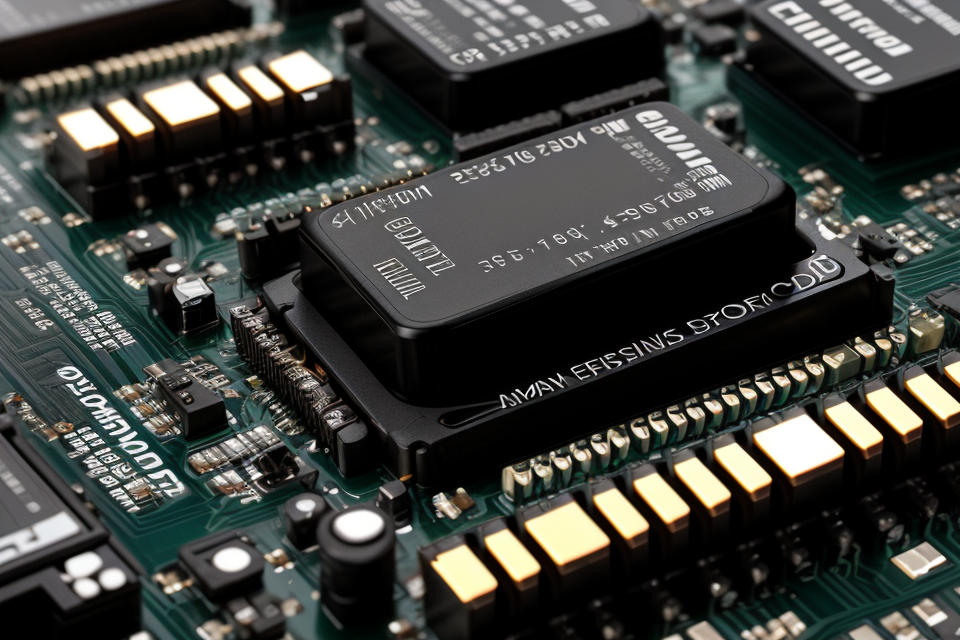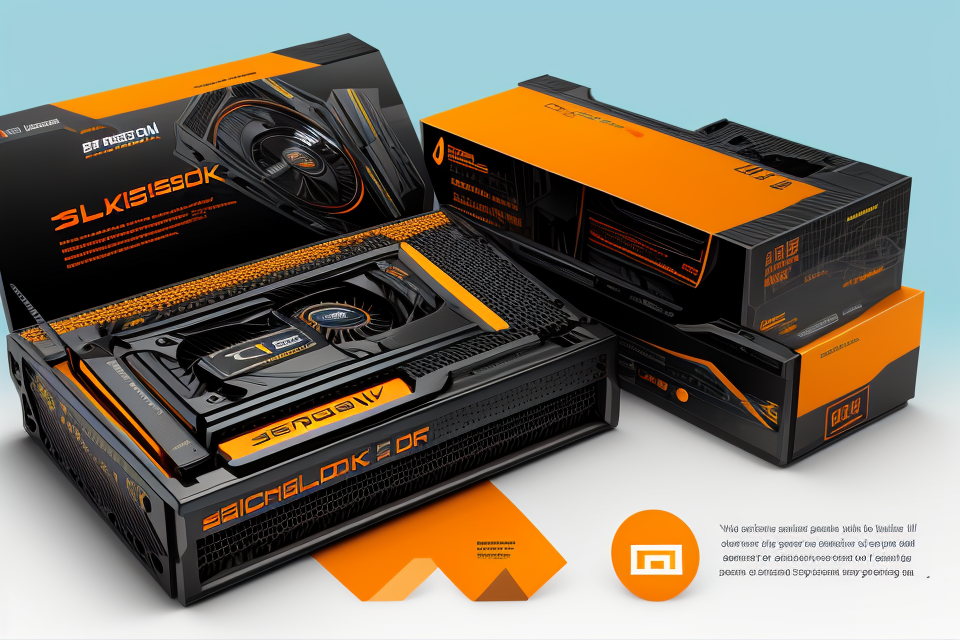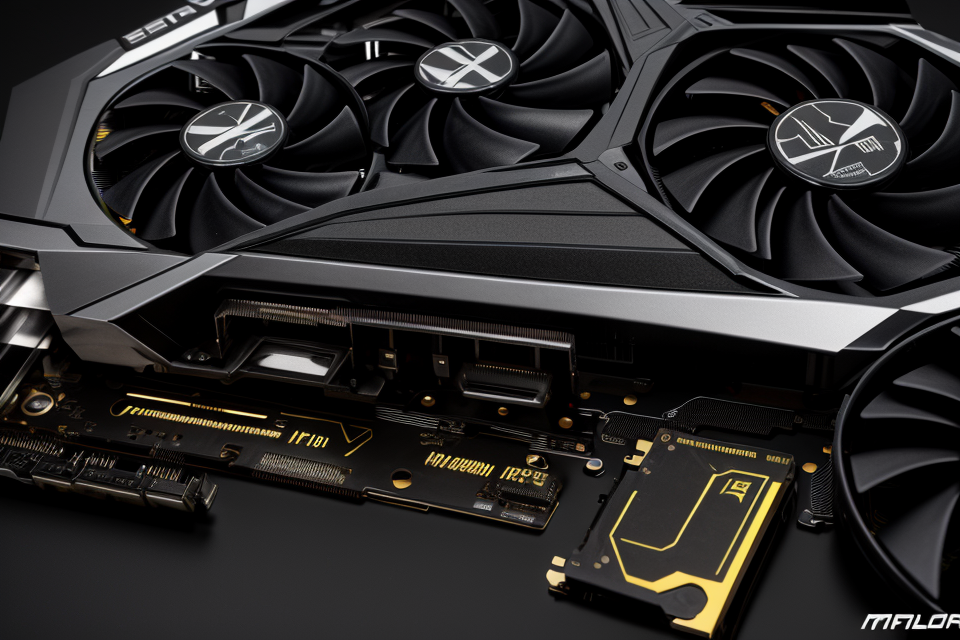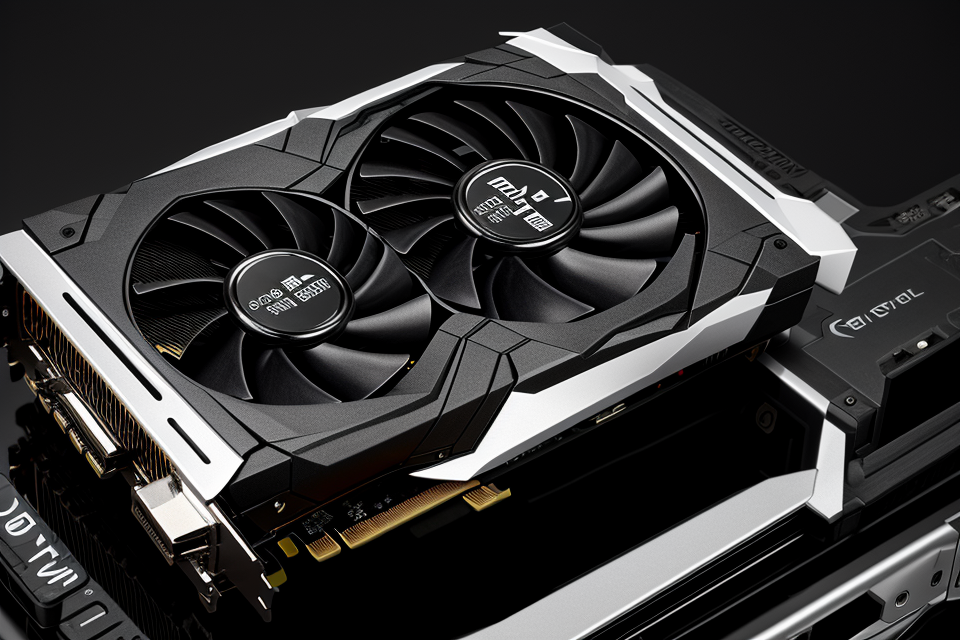
A graphics card, also known as a display or video card, is an essential component of a computer system that is responsible for rendering images and video on a display device. The primary purpose of a graphics card is to offload the processing of visual data from the CPU, allowing for smoother and more efficient graphics rendering. With the increasing demand for high-quality graphics in gaming, video editing, and other applications, the role of a graphics card has become more critical than ever. In this article, we will explore the main purpose of a graphics card and how it can impact the performance of your computer.
The main purpose of a graphics card is to render images and videos on a computer screen. It is responsible for processing the visual data that is sent to it by the CPU and generating the corresponding images on the screen. Graphics cards are used in a wide range of applications, including gaming, video editing, 3D modeling, and scientific simulations. They are designed to handle the complex mathematical calculations required to render high-quality images and videos, and they typically have a large amount of video memory (VRAM) to store the images while they are being processed. In addition to their primary function, graphics cards can also be used for other tasks such as cryptocurrency mining and scientific simulations.
Graphics Card Basics
Components of a Graphics Card
A graphics card, also known as a display card, video card, or GPU (Graphics Processing Unit), is a hardware component designed to handle the rendering and processing of images and graphics. It is responsible for converting digital data into the visual output that is displayed on a monitor or screen. The following are the main components of a graphics card:
* GPU (Graphics Processing Unit): The GPU is the primary component of a graphics card. It is responsible for processing and rendering images and graphics. The GPU is designed to handle complex mathematical calculations, such as matrix operations and pixel manipulation, that are required to produce high-quality visuals.
* VRAM (Video Random Access Memory): VRAM is a type of memory that is used to store and retrieve graphical data. It is designed to handle the demands of high-performance graphics rendering and provides a faster and more efficient way to access and manipulate image data than traditional system memory.
* BIOS (Basic Input/Output System): The BIOS is a small software program that is responsible for setting up and configuring the graphics card. It is stored on a small chip on the graphics card and is used to configure the card’s settings, such as clock speeds and power management options.
* Cooling system: The cooling system is responsible for maintaining optimal temperatures within the graphics card. It is designed to dissipate heat generated by the GPU and other components during operation, to prevent overheating and ensure stable performance.
In summary, the main components of a graphics card include the GPU, VRAM, BIOS, and cooling system. These components work together to handle the processing and rendering of images and graphics, providing high-performance visual output for a wide range of applications.
Graphics Card Functions
Gaming
A graphics card, also known as a GPU (Graphics Processing Unit), is an essential component for gamers who want to experience the best gaming performance. The primary function of a graphics card is to render complex graphics and animations, handle high-resolution textures and lighting, and process realistic physics and AI. This means that the graphics card is responsible for bringing the game world to life on the screen, providing realistic visuals and immersive gameplay.
Gaming is a highly demanding task that requires the graphics card to perform at its peak performance. With the latest advancements in technology, modern graphics cards are capable of handling even the most demanding games with ease. They can handle complex scenes with hundreds of objects, multiple light sources, and intricate textures, providing a seamless gaming experience.
Furthermore, graphics cards are designed to handle high-quality video footage, making them ideal for playing high-definition games. They can handle realistic physics and AI, which means that characters and objects in the game world behave in a realistic manner, adding to the overall immersion of the game.
Video Editing and Creation
In addition to gaming, graphics cards are also used for video editing and creation. Video editing requires the graphics card to render high-quality video footage, handle multiple layers and effects, and process large video files. Graphics cards are designed to handle these tasks with ease, providing smooth video playback and real-time rendering.
For video creation, graphics cards are used to render high-quality 3D animations and visual effects. They can handle complex textures and lighting, providing realistic visuals that can be used in movies, commercials, and other forms of media. Additionally, graphics cards can handle large 3D files, allowing for the creation of complex 3D models and animations.
In conclusion, graphics cards are essential components for gamers and video editors alike. They provide the processing power needed to render complex graphics and animations, handle high-resolution textures and lighting, and process realistic physics and AI. Whether you’re playing the latest game or creating a stunning video, a graphics card is a must-have component to ensure smooth and seamless performance.
Graphics Card Types
Integrated Graphics
Integrated graphics is a type of graphics card that is built into the CPU (Central Processing Unit) of a computer. Unlike dedicated graphics cards, integrated graphics are less powerful and are designed for basic tasks such as browsing the internet, watching videos, and running basic applications.
One of the main advantages of integrated graphics is that they are more energy-efficient and generate less heat than dedicated graphics cards. This makes them ideal for laptops and other portable devices where space and power consumption are limited. However, for tasks that require more graphical processing power, such as gaming or video editing, integrated graphics may not be sufficient.
Dedicated Graphics Cards
Dedicated graphics cards, also known as discrete graphics cards, are separate from the CPU and are designed to handle more demanding tasks such as gaming, video editing, and 3D modeling. Unlike integrated graphics, dedicated graphics cards have their own memory and processing power, which allows them to render images and videos more quickly and efficiently.
Dedicated graphics cards come in a range of sizes and prices, from entry-level cards that are suitable for basic gaming to high-end cards that are designed for professional use. Some of the most popular brands of dedicated graphics cards include NVIDIA and AMD.
When choosing a graphics card, it is important to consider the specific needs of your computer and the tasks you will be using it for. If you are a gamer or content creator, a dedicated graphics card may be essential for achieving the best results. However, for basic tasks such as browsing the internet or watching videos, an integrated graphics card may be sufficient.
Choosing the Right Graphics Card
Choosing the right graphics card is an important decision that can have a significant impact on the performance and functionality of your computer. There are several factors to consider when selecting a graphics card, including budget, performance needs, compatibility with other components, and form factor and physical size.
Budget
One of the most important factors to consider when choosing a graphics card is your budget. Graphics cards can range in price from around $50 to several hundred dollars, depending on the brand, model, and features. It’s important to set a budget before you start shopping, so you can narrow down your options and find a card that fits your needs and budget.
Performance Needs
Another important factor to consider is your performance needs. If you’re a gamer, you’ll want a graphics card that can handle the latest games at high resolutions and frame rates. If you’re a content creator, you’ll want a card that can handle demanding applications such as video editing and 3D modeling. Make sure to research the performance of different graphics cards and compare them to your specific needs.
Compatibility with Other Components
It’s also important to consider compatibility with other components in your computer. Make sure the graphics card you choose is compatible with your motherboard, power supply, and case. Check the manufacturer’s website for compatibility information and make sure to read reviews and user feedback to ensure the card will work well in your specific setup.
Form Factor and Physical Size
Finally, consider the form factor and physical size of the graphics card. Some graphics cards are small and can fit in any case, while others are larger and may require a specific case or modifications to your current case. Make sure to measure the dimensions of the card and compare them to your case before making a purchase.
Overall, choosing the right graphics card requires careful consideration of several factors. By taking the time to research and compare your options, you can find a card that meets your needs and budget.
FAQs
1. What is the main purpose of a graphics card?
A graphics card, also known as a display card or video card, is a hardware component that is responsible for rendering images and videos on a computer screen. It is designed to handle the complex calculations required to display high-quality graphics and video content. The main purpose of a graphics card is to offload the workload from the CPU and provide better performance when it comes to handling graphics-intensive tasks such as gaming, video editing, and 3D modeling.
2. Can a computer function without a graphics card?
Yes, a computer can function without a graphics card, but it may not be able to handle graphics-intensive tasks. The CPU would have to handle all the graphics processing, which can lead to slow performance and may not be able to handle high-end graphics requirements. However, for basic computing tasks such as web browsing, document editing, and email, a computer without a graphics card can still function normally.
3. What are the benefits of having a graphics card?
The benefits of having a graphics card are numerous. Firstly, it provides better performance when it comes to handling graphics-intensive tasks such as gaming, video editing, and 3D modeling. It also offloads the workload from the CPU, allowing the CPU to handle other tasks more efficiently. Additionally, having a dedicated graphics card can improve the overall aesthetics of the computer, as it allows for better display quality and more vibrant colors.
4. How do I know if my computer needs a graphics card upgrade?
If you are experiencing slow performance or graphics-related issues such as stuttering or lagging when playing games or using graphics-intensive applications, it may be an indication that your computer needs a graphics card upgrade. Additionally, if you are using an older computer with integrated graphics that are not capable of handling modern games or applications, a graphics card upgrade may be necessary. You can also check the specifications of your current graphics card and compare it to the requirements of the tasks you want to perform to determine if an upgrade is necessary.


